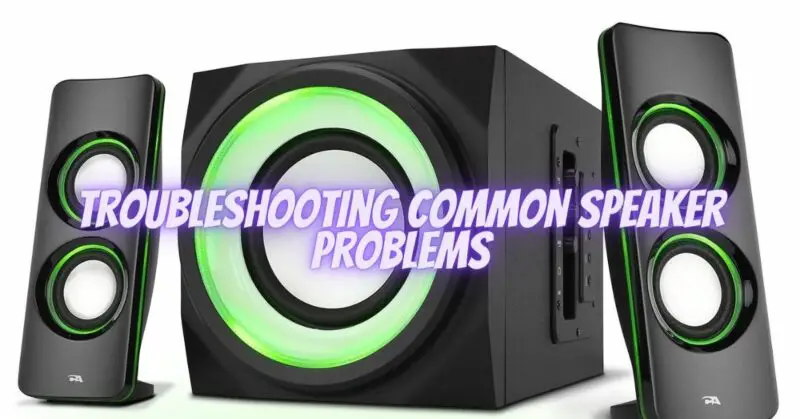Speakers are essential components of audio systems, providing us with the joy of immersive sound experiences. However, like any electronic device, speakers can encounter various issues that affect their performance. In this article, we will explore common speaker problems and provide troubleshooting steps to help you identify and resolve them, ensuring optimal audio quality and longevity.
- No Sound:
a. Check Connections: Ensure that the speaker cables are securely connected to both the speaker and the audio source. Also, verify that the audio source is properly configured and functional.
b. Volume Levels: Confirm that the volume levels on both the audio source and the speaker are appropriately adjusted. Check for any mute settings or volume limitations.
c. Power Supply: Ensure that the speaker is receiving power by checking the power cable, connections, and power source. Power cycling or checking the fuse may also help.
- Distorted Sound:
a. Speaker Placement: Evaluate the speaker placement to ensure that it is not too close to walls or corners, as this can cause sound reflections and distortion. Adjust the positioning for optimal sound dispersion.
b. Volume Levels: Avoid pushing the speaker beyond its recommended limits, as it can result in distortion. Reduce the volume if necessary to maintain clear sound reproduction.
c. Audio Source Quality: Verify that the audio source is providing high-quality audio. Try playing different audio files or using a different audio source to isolate the issue.
- Muffled or Poor Sound Quality:
a. Speaker Placement: Ensure that the speakers are positioned properly, with the drivers facing the listening area. Adjust the angle or height if needed for improved sound projection.
b. Equalization Settings: Check the equalization settings on the audio source or amplifier. Adjust the bass, treble, and other settings to enhance the sound quality according to your preferences.
c. Speaker Damage: Inspect the speaker drivers and components for any physical damage or deterioration. Damaged or deteriorated parts may affect sound quality and should be repaired or replaced.
- Speaker Buzzing or Humming:
a. Grounding Issues: Ensure that the speakers and audio equipment are properly grounded. Check for loose or faulty grounding connections and make necessary adjustments.
b. Signal Interference: Keep the speakers away from potential sources of interference, such as Wi-Fi routers, cell phones, or other electronic devices. Adjusting their placement can help minimize buzzing or humming.
c. Shielded Cables: Use shielded audio cables to minimize the risk of electromagnetic interference. Replace existing cables with shielded ones if needed.
- Speaker Overheating:
a. Ventilation: Ensure that the speakers have proper ventilation and are not obstructed by objects. Overheating can affect performance and may require the speaker to cool down before use.
b. Power Output: If using an amplifier, check that the power output matches the speaker’s specifications. Using an underpowered amplifier can cause overheating.
c. Continuous Use: Avoid prolonged high-volume playback, as it can lead to excessive heat buildup. Take breaks and allow the speakers to cool down when needed.
Conclusion:
Troubleshooting common speaker problems requires a systematic approach to identify and resolve the issues affecting audio performance. By checking connections, adjusting volume levels, evaluating speaker placement, addressing grounding issues, and ensuring proper ventilation, you can overcome many common speaker problems. Remember to inspect speaker components for damage and seek professional assistance if needed. By applying these troubleshooting steps, you can enjoy optimal sound quality and prolong the lifespan of your speakers, enhancing your overall audio experience.


